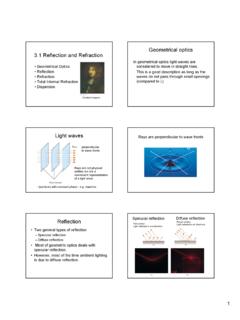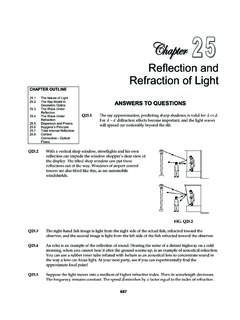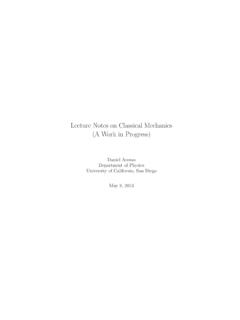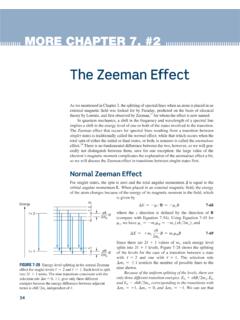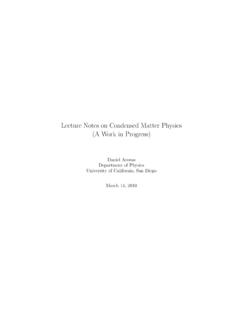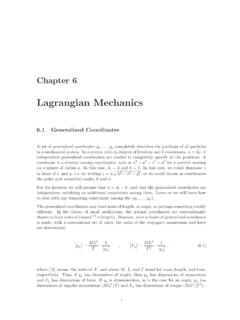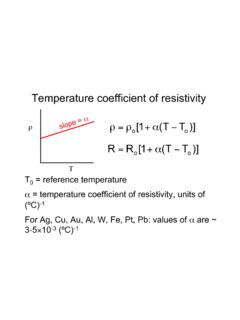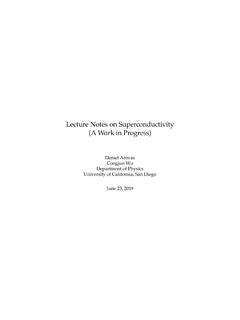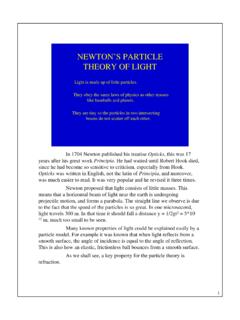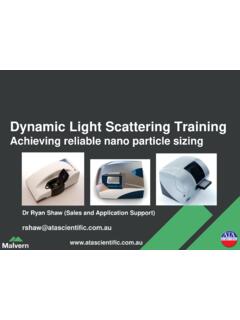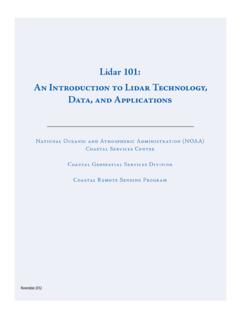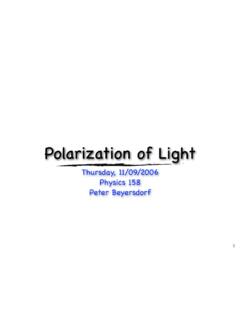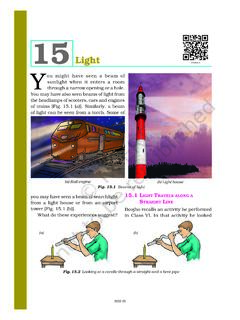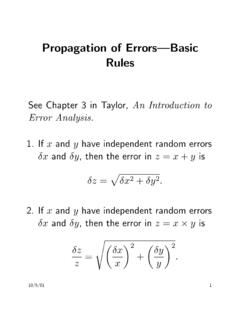Transcription of Diffraction grating - Physics Courses
1 DiffractionDiffraction gratingSingle slit diffractionCircular diffractionDiffraction and Interference Diffraction and interference are similar phenomena. Interference is the effect of superposition of 2 coherent waves. Diffraction is the superposition of many coherent grating Consists of a flat barrier which contains many parallel slits separated by a short distance d. A parallel monochromatic light beam passing through the grating is diffracted by an angle similar to two slit , the intensity of the diffracted light is higher andthe peaks are much narrower. dsin =m Diffraction gratingtwo slit interferencedmulti-slit interferenceDiffraction gratingdsin =m m=0m=1m=2m=-1m=-2m=0m=1m=2m=-1m=-2 Higher intensityQuestionA grating in a spectrometer has a length of 2 cm and has contains 104lines. Find the first order Diffraction angle for light with a wavelength of 500 order m=1dsin =m = == = 2642x10 m2x10 m10 ==L= cmN =104slitsLdN=Use of a Diffraction grating in a spectrometerDispersion of light of different wavelengths2 Optical compact disc10-6 mThe closely spaced dots act like a Diffraction slit diffractionbarriera For single slit Diffraction the complex behavior of the wave as a function of the aperture a is explained by interference between multiplecoherent point sources in the sourcesTwo Limiting CasesWave pictureLight spreads out when passedthrough small pictureLight moves in a straight lineBarrieraa>> What happens to thelight for the general case?
2 A<< Laser slit openWhat happens to the laser beamas the slit decreases?screenintensityslit narrowWhat happens to the laser beamas the slit decreases?screenintensityThe pattern spreads out as the slit becomes narrowerSingle slit Diffraction patternSingle slit Diffraction patternHow do weaccount for theminima andmaxima?Analyze assuming Fraunhofer Diffraction ) Screen far from the slit orb) Converging lens with screen at the focal length3 Single slit diffractionHuygens principle Each point in the wave in the slitacts as a source of spherical waves. sum the waves with different phases amplitude( )sum Slit widthaSingle slit diffractionFind the angle at the first minimumDivide the slit into 2 halvesdarkasin22 =asin dark= amplitude = 0 darkLight from every point in the top half interferes destructively with a light from a point in the bottom half whenCondition for a minimumasin dark=m m=+1, +2, .. darkExampleLy =LyaLay =A laser beam with a wavelength of 500 nm is passed througha single slit with a width of mm.
3 Find the distance betweenthe central maximum and the first minimum of the Diffraction pattern on a screen 5 m mmm=1asin =m sin tan L=5 mysmall angle approximationfirst minimum() = = cmCircular diffractionWaves passing through a circular hole forms aa circular Diffraction holeCircular Diffraction patternThe first minimumoccurs =Ddiameter4 Circular Diffraction limits the minimum size do the spot that can be formed by a rays froma point at infinityCan focus on a pointat the focal pointof the lensAccording to ray Diffraction limits the minimum size do the spot that can be formed by a rays froma point at infinityAccording to wave Dhas a Diffraction patternwith a width of min minExampleA camera lens with an f- number (f/D) equal to is used to focus light from a distant source. What is the Diffraction limited radius of the spot that can be formed for 500 nm light ? =fr minrf=fr ( )D =97( )(500x10 )( ) m == nmClose to the wavelengthof lightOptical CD10-6 mThe amount of information that can be encoded is limitedby the diameter of the Diffraction -limited laserbeamBlu-ray Disc Higher density of spot canbe obtained using a bluelaser with shorter wavelength because of the smaller size of thediffraction limited limits the resolution of light microscopes (200 nm)5resolvedjustresolvednotresolvedThe resolution of images is limited by the Diffraction of two images by a lensRayleigh criterionFor resolution of two object by a circular lens of diameter D the Diffraction limit of resolution occurs when the image of the second object is at position of the first minimum of the Diffraction pattern of the first object.
4 = minDGeoEye 1 Imaging m diameter mirrorResolution m Altitude of 684 kmSatellite picture of Sea == )m10x684)(m10x550( = Diffraction limit ( =550nm)Ly DResolution limit of the eye min 2 The eye differs from a simple lens in The light from the lens travels through a refractive The light passing through the middle of the lens changes direction due to These two effects cancel so the Rayleigh criterion is the same as for a lens in = neyen= limit of the eyeTwo light sources ( = 500nm) are separated vertically by mm. How far away can these objects be resolved by the eye Assume a diameter of the pupil of mm. neye= D= =Lymineye2eyewaterynn ( ) = == = 339(2x10 )(2x10 ) (500x10 ) == = min 2 Diffraction limit Diffraction limits the resolution of objects viewed through an optical system Resolution depends on the size of the aperture and the wavelegth of light . Consequences atoms cannot be seen with a light microscope (shorter wavelengths are required) Satellite cameras have a limited resolution.
5 To attain higher resolution. Larger diameter lenses Shorter wavelengths.
